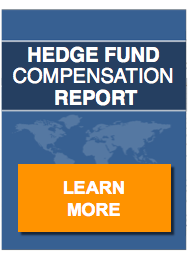Hedge fund managers are nothing if not innovative. Take Davide Erro, chief investment officer of the Hong Kong-based Turiya Advisors Asia, who delighted his investors by returning 17.5% of their capital investment. Turiya further pleased investors by returning north of 20% through the first 11 months of 2014.
Erro reasoned that Turiya was growing at a faster pace than he had anticipated (a 20% return will encourage inflows), and that by returning capital, the fund would be in a better position to pursue returns. Erro, in effect, postulates that reducing assets under management (AUM) in some way positions a fund to achieve greater returns. Huh?
AUM vs. Performance
Despite the lack of consensus on the definition of a small hedge fund, there is no shortage of debate on the topic of comparative performance—small versus large.
Academic studies of hedge fund performance simply ignore the absence of a definition and, rank the hedge funds being studied according to AUM, defining the top one-third as large, the middle one-third as medium and the bottom one-third as small. That is an appropriate solution when dealing with a finite universe of hedge funds but, woefully inadequate when discussing the industry as a whole.
That said, the preponderance of academic studies conclude that small hedge funds outperform their larger rivals and there is abundant anecdotal evidence to support this conclusion.
Is Turiya Small?
It is not—at least according to Bloomberg’s 100 Top Performing Large Hedge Funds. Turiya, at $3 billion in AUM, would nestle comfortably in this nest of over-achievers. However, Turiya is conspicuously absent from the list even though it is larger than two-thirds of the funds that comprise Bloomberg’s top 100 “large” hedge funds … and not by reason of performance! Only six of the one hundred funds on the list boasted returns exceeding 20%. This begs the question: Why wasn’t Turiya on Bloomberg’s list?
In fairness, Erro did not define Turiya as small or large. Rather, he implied that it was larger than he wanted it to be, hence the return of capital to his investors.
Perception is Reality
By voluntarily shrinking assets under management, Erro created the illusion of being a small hedge fund. But why would a CIO do this? Because institutional investors have a decided preference for smaller hedge funds with a track record of robust returns.
In one brilliant stroke, Erro secured the loyalty of his current investors and, by creating the perception that his fund was small, through the unprecedented action of voluntarily returning 17.5% of assets under management to his investors, Davide Erro garnered financial media attention and priceless free publicity for his relatively obscure Hong Kong-based fund.
Only time will answer the question posed, but one thing is certain, the future of Turiya Advisors Asia will be fascinating to watch play out in the coming months. Perhaps it will be in the Bloomberg top 100 for 2015.


